Input interpretation

(2-methyl-1-propenyl)benzene
Chemical names and formulas
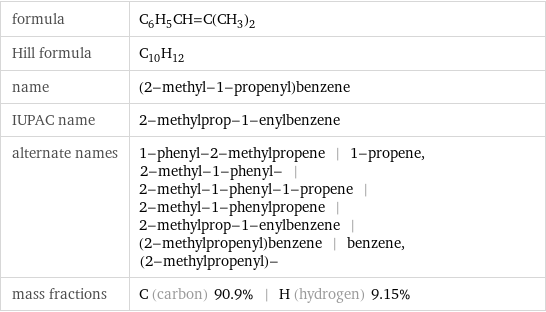
formula | C_6H_5CH=C(CH_3)_2 Hill formula | C_10H_12 name | (2-methyl-1-propenyl)benzene IUPAC name | 2-methylprop-1-enylbenzene alternate names | 1-phenyl-2-methylpropene | 1-propene, 2-methyl-1-phenyl- | 2-methyl-1-phenyl-1-propene | 2-methyl-1-phenylpropene | 2-methylprop-1-enylbenzene | (2-methylpropenyl)benzene | benzene, (2-methylpropenyl)- mass fractions | C (carbon) 90.9% | H (hydrogen) 9.15%
Lewis structure
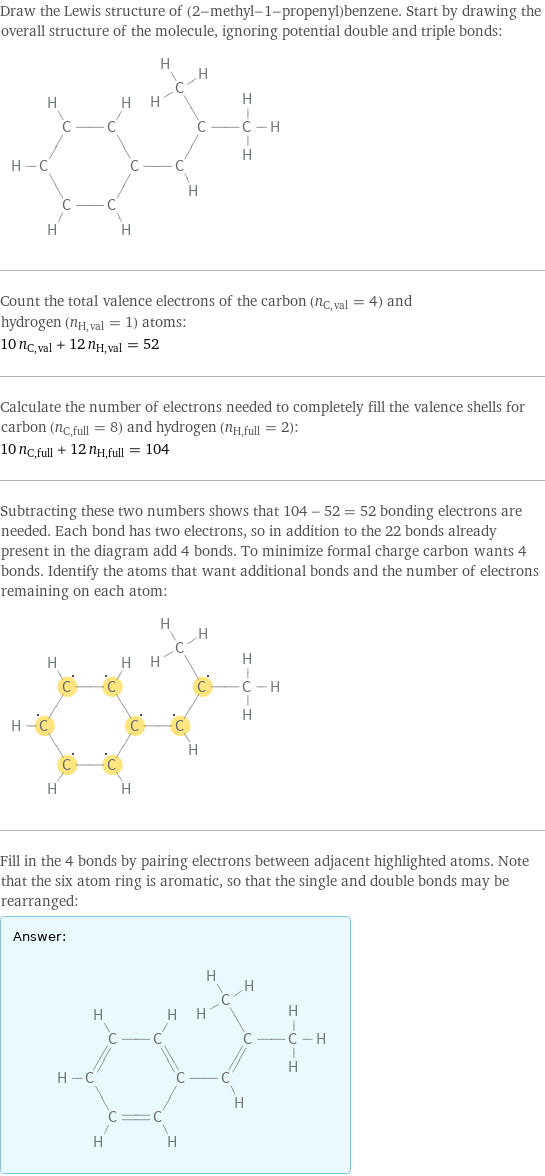
Draw the Lewis structure of (2-methyl-1-propenyl)benzene. Start by drawing the overall structure of the molecule, ignoring potential double and triple bonds: Count the total valence electrons of the carbon (n_C, val = 4) and hydrogen (n_H, val = 1) atoms: 10 n_C, val + 12 n_H, val = 52 Calculate the number of electrons needed to completely fill the valence shells for carbon (n_C, full = 8) and hydrogen (n_H, full = 2): 10 n_C, full + 12 n_H, full = 104 Subtracting these two numbers shows that 104 - 52 = 52 bonding electrons are needed. Each bond has two electrons, so in addition to the 22 bonds already present in the diagram add 4 bonds. To minimize formal charge carbon wants 4 bonds. Identify the atoms that want additional bonds and the number of electrons remaining on each atom: Fill in the 4 bonds by pairing electrons between adjacent highlighted atoms. Note that the six atom ring is aromatic, so that the single and double bonds may be rearranged: Answer: | |
3D structure
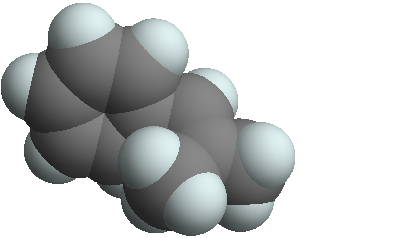
3D structure
Basic properties
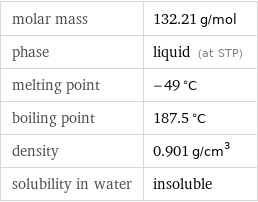
molar mass | 132.21 g/mol phase | liquid (at STP) melting point | -49 °C boiling point | 187.5 °C density | 0.901 g/cm^3 solubility in water | insoluble
Units

Liquid properties (at STP)
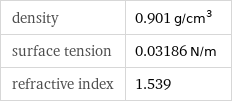
density | 0.901 g/cm^3 surface tension | 0.03186 N/m refractive index | 1.539
Units

Chemical identifiers

CAS number | 768-49-0 Beilstein number | 1902046 PubChem CID number | 13030 PubChem SID number | 24857051 SMILES identifier | CC(=CC1=CC=CC=C1)C InChI identifier | InChI=1/C10H12/c1-9(2)8-10-6-4-3-5-7-10/h3-8H, 1-2H3 MDL number | MFCD00008899
Safety properties

flash point | 58.89 °C

DOT hazard class | 3 DOT numbers | 3295